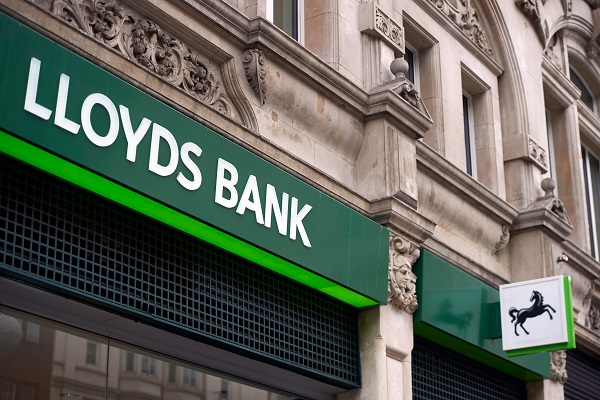Are Lloyds Bank shares a ‘buy’ after profit soars 46%
3rd May 2023 07:53
by Richard Hunter from interactive investor
It made £2.3 billion in just three months, and these quarterly results demonstrate measured progress. Our head of markets runs through the banking giant's latest numbers.

Lloyds Banking Group (LSE:LLOY) has brought down the curtain on the quarterly banking reporting season with another show of strength, as it breezed past expectations on virtually all measures.
As has been the theme throughout, rising interest rates and relatively low levels of customer defaults have boosted most of the key metrics with the backdrop playing into the hands of well-capitalised banks.
Although not entirely isolated from some banking turmoil which has shaved share prices across the board, there is little to suggest from these numbers that the pressures being felt on smaller banks elsewhere globally is having a direct impact on domestic fortunes.
- Invest with ii: Open an ISA | ISA Investment Ideas | ISA Offers & Cashback
At the headline level, pre-tax profit increased by 46% to £2.26 billion in the three months to 31 March compared with £1.54 billion a year previous, and against estimates of £1.95 billion. Revenues added 15% to £4.65 billion from £4.03 billion, in line with expectations. This increase was largely driven by an increase in Net Interest Margin given the interest rate environment to 3.22% from 2.68%, and in line with the figure of the previous quarter. In turn, Net Interest Income rose by 20% from £2.95 billion to £3.54 billion, while the other key metrics also underlined a bank in rude health at present.
The capital cushion remained at a robust 14.1%, while the Liquidity Coverage Ratio rose from 138% to 143%, well in excess of regulatory requirements. Lloyds traditionally has the most efficient cost/income ratio in the sector, and an improvement from 52.3% to 47.1% was achieved despite an increase of 5% in operating costs, where planned strategic investment and the cost of new business set more targets for future growth.
Another theme of the season has been an unexpectedly strong bounce in Return on Tangible Equity (ROTE), and Lloyds is no exception given the hike in underlying income. The ROTE improved to 19.1% from 10.7% a year previous, well ahead of estimates of 15.9% and the group has set a target of around 13% for the future.
Inevitably there are some pockets of concern which the bank is monitoring closely and has taken some remedial action where necessary.
- Lloyds Bank and NatWest among FTSE 100 mega-dividend payouts in May
- HSBC’s results provide palpable relief
- Stockwatch: six share tips including a FTSE 100 stock to buy
The credit impairment charge of £243 million compares with £177 million a year previous, largely based on an increased provision within Retail, where there have been modest signs of increasing defaults, although for the most part these remain at or below pre-pandemic levels.
The marginal loss of some customer deposits was also explained by seasonal tax payments lessening balances as tax returns became due, as well as an increasingly competitive marketplace on the rates of interest being paid on balances elsewhere.
More positively, the Wealth, Insurance, Pensions and Investments business on which Lloyds is basing some of its future growth, namely to increase fee rather than interest income, saw net new money of £2 billion in the quarter to Assets under Administration.
Meanwhile, the ongoing closure of branches as consumers hurtle towards a more digital future also lessens some of the group’s cost burden. In the meantime, the previously announced share buyback programme of £2 billion is well under way, while a dividend yield of 5% is adequate reward to shareholders compared to many of its rivals.
As such, the glass remains half-full on balance. The group has rallied against an increasingly tightening screw which has placed pressure on consumers, while keeping an eye on future opportunities.
- Lord Sebastian Coe: The ii Family Money Show
- Rolls-Royce shares tipped to stage fresh rally
- The Week Ahead: BP, HSBC, Shell, Lloyds Bank, IAG, Next
The share price has had to contend with the group’s reputation as being something of a barometer for the UK economy, which has not been a comfortable ride, in addition to the wider banking weakness of recent months. The shares are down by 11% in the last three months as a result, although over the last year have posted a gain of 4%, which compares to a rise of 2.8% for the wider FTSE100.
The measured progress which has opened the bank’s new year may not have shot the lights out, but represents a positive direction of travel, which in turn will likely result in the market consensus of the shares as a 'buy' remaining in place.
These articles are provided for information purposes only. Occasionally, an opinion about whether to buy or sell a specific investment may be provided by third parties. The content is not intended to be a personal recommendation to buy or sell any financial instrument or product, or to adopt any investment strategy as it is not provided based on an assessment of your investing knowledge and experience, your financial situation or your investment objectives. The value of your investments, and the income derived from them, may go down as well as up. You may not get back all the money that you invest. The investments referred to in this article may not be suitable for all investors, and if in doubt, an investor should seek advice from a qualified investment adviser.
Full performance can be found on the company or index summary page on the interactive investor website. Simply click on the company's or index name highlighted in the article.